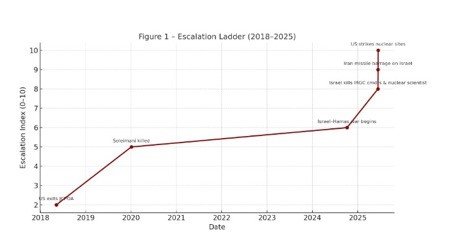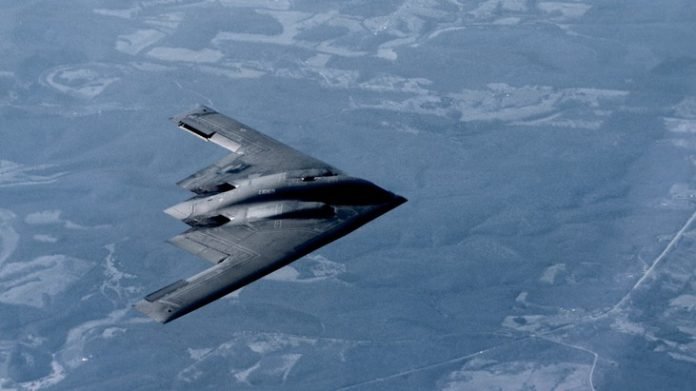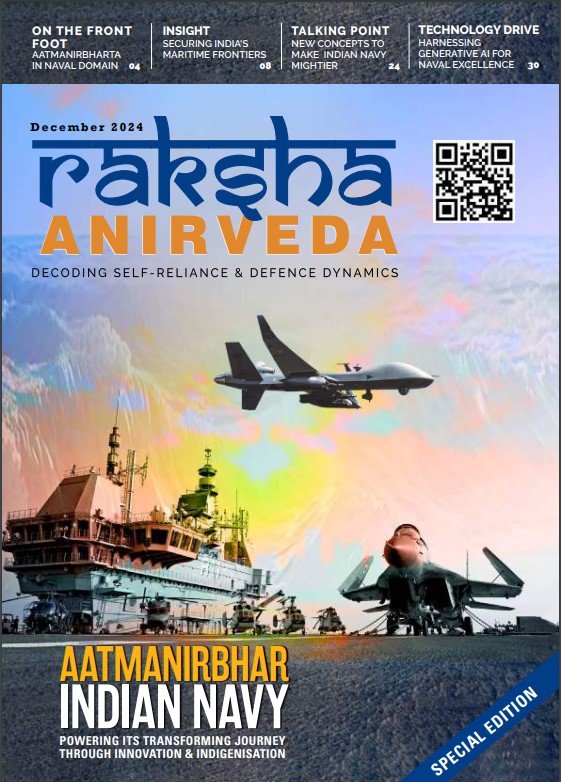A History That Refuses to Fade: For those watching the events of June 2025 unfold with shock, history offers little comfort. The United States’ latest kinetic venture is not an aberration but part of a long and often overlooked continuum.
From the atomic devastation of Hiroshima and Nagasaki in 1945 to the thunder of airstrikes in Syria and Pakistan well into the 21st century, America has used force across more than twenty countries – Korea, Vietnam, Laos, Cambodia, Libya, Iraq, and Afghanistan among them.
Even far-flung corners like Grenada and Panama have felt the weight of American airpower. Yet through it all, the so-called “international community” has rarely mustered the collective will to question, much less censure, these interventions. This unilateralism and intervention has faced no sanctions, no tribunals, and no UNSC fury. It forces us to ask: if such a record belonged to any other state, would the global chorus still be mute?
The Strike That Changed the Region
On the night of 21/22 June 2025, six B-2 Spirit bombers skimmed Iran’s desert ridges and released the first combat-loaded GBU-57A/B bunker-busters.
Simultaneously, two US submarines disgorged thirty Tomahawk cruise missiles toward Natanz and Isfahan. By breakfast time in Delhi, the centrifuge halls beneath Fordow’s mountain were a mangled cavern – and global markets were on fire.
Oil futures spiked $11 in a single session; gold brushed $2,500; and India’s rupee shuddered as traders began to price in an existential question: are we drifting from contested peace toward systemic war?
These were not symbolic targets. Fordow sits buried under ninety metres of rock, long considered invulnerable to conventional strikes. This was not just a strike. It was a 21st-century ruleless collusion of alliances whose fallout could be on any part of the world including India be it economically, diplomatically, or strategically.
From the atomic devastation of Hiroshima and Nagasaki in 1945 to the thunder of airstrikes in Syria and Pakistan well into the 21st century, America has used force across more than twenty countries – Korea, Vietnam, Laos, Cambodia, Libya, Iraq, and Afghanistan among them
The Descent to Fordow: From Deadlocked Diplomacy to Shock and Awe
The path to the June 2025 strike did not emerge overnight. The situation escalated over a timeline of distrust and inimical actions. In 2018, America withdrew from the Joint Comprehensive Plan of Action (JCPOA), dismantling the fragile framework that had kept Iran’s nuclear ambition in check.
This resulted in Iran responding by enriching uranium to 60 percent, and fortifying its facilities, particularly Fordow, underground ninety metres of mountain rock. This was beyond the then US depth capability reach of 60 metres.
What one IAEA official termed a “slow-motion sprint” was, in reality, a calibrated defiance, meticulously documented in confidential agency reports, intelligence assessments, and Israeli drone surveillance.
By mid-2025, the warnings had grown urgent. Intelligence out of Langley suggested that Iran’s breakout window – the time needed to assemble a nuclear device – had narrowed to under three weeks.
The result: a calculated pre-emptive strike on June13, 2025, that unfolded under the cover of darkness, with the world waking up to its aftermath through presidential declarations and satellite imagery.
Following the assassination of IRGC commanders and a top nuclear scientist by Israeli forces, Tehran launched a massive missile barrage into Israeli territory. That was the final spark aimed to decapitate Iran’s nuclear ambition.

Shockwaves and Strategic Calculus
The implications of the strike were immediate. Iran’s so-called “ring-of-fire” was activated: Hezbollah mobilised near Israel’s northern border, Houthi rebels elevated their missile readiness in the Red Sea, and proxy militias from Iraq to Syria threatened American assets. Israel opened its public shelters from Metula to Ashkelon.
But the real tremor was felt in world commodity pits: Brent crude vaulted past $115; insurance premia for tankers transiting the Strait of Hormuz doubled overnight.
These were not symbolic targets. Fordow sits buried under ninety metres of rock, long considered invulnerable to conventional strikes. This was not just a strike. It was a 21st-century ruleless collusion of alliances whose fallout could be on any part of the world including India be it economically, diplomatically, or strategically
Why India cannot Ignore or be Passive
This is not a remote crisis in a far-off theatre. For India, the aftershocks are deeply intimate.
- Energy Security at Gunpoint: More than four-fifths of India’s crude basket and sixty percent of its LNG stream either originate in or sail through, the Strait of Hormuz. Every $10 jump in oil prices inflates New Delhi’s import bill by roughly $13–14 billion, widening the current account deficit by 0.3 percent of GDP. At $120 crude, economists at Information and Credit Rating Agency (ICRA) warn of a ₹1.2 lakh-crore hole in the exchequer and a structurally weaker rupee.
- Maritime Vulnerability and Naval Stretch: The maritime sea lanes and safety of merchant ships through the pirate-infested waters of the Gulf of Aden will become both complex and hazardous. The Hormuz Strait could become a boiling point across this vital 21-mile-wide maritime bottleneck. Further, the threat is structured for sporadic patrols, not an extended conflict involving rapid assault boats and swarms of drones. Thus, a decision will have to be taken.
- The Gulf Indians: Nine Million Citizens, One Exit Route: Nine million Indian nationals live across the Gulf Cooperation Council states. Even a limited IRGC missile burst on Al-Dhafra or Camp Arifjan would trigger evacuation nightmares last seen during the Kuwait crisis of 1990. India’s Operation Sindhu, the airlift of Indians overseas in distress presumes a permissive air corridor which does not exist.
- Diplomatic Tightrope?: India’s strategic autonomy rests on bilateral and multilateral partnerships: Russian hydrocarbons, US high technology, Israeli drones, and Iranian port access at Chabahar. A US–Iran war chokes that diplomatic space with a Catch-22 situation. But this crisis compresses that space. Align too closely with Washington, and Tehran’s doors shut. Stand neutral, and Washington’s patience may fray.
- Domestic Narrative Management: High inflation, oil-linked price surges, and market volatility can sap political capital in a flash. Transparent communication – on why India must endure temporary pain and how it’s working to cushion the impact – is no longer a bureaucratic task. It’s a strategic imperative.
This is not a remote crisis in a far-off theatre. For India, the aftershocks are deeply intimate. Every $10 jump in oil prices inflates New Delhi’s import bill by roughly $13–14 billion, widening the current account deficit by 0.3 percent of GDP. At $120 crude, economists at ICRA warn of a ₹1.2 lakh-crore hole in the exchequer and a structurally weaker rupee
Iran’s Quandary: How Hard to Hit Back?
Tehran, though cornered, is not without options. But it faces a paradox. It must respond to preserve domestic credibility but avoid a retaliatory escalation that invites all-out war. A calibrated proxy-led response —perhaps through Hezbollah or Houthis — is more likely than an open confrontation.
But that calibration is inherently unstable. One misfired missile, one Israeli miscalculation, or a misread Chinese naval “escort” through Hormuz could fuse parallel crises into a single global conflagration.
Three Theatres, One Flashpoint
World wars, historians remind us, require three ingredients: alliance entanglements, multi-front crises, and industrial-scale mobilisations. The first two are already visible. US–Israel stand on one axis, Iran and its proxies on another. Russia and China orbit close enough to matter. What’s missing – for now – is the full economic mobilisation. But rising oil prices and underwater cable vulnerabilities could change that in weeks.
India must quietly prepare for a scenario where the West Asia crisis intersects with a South China Sea flashpoint or a Baltic escalation. Strategic compartmentalisation is a luxury we no longer have.
India’s Choices: Passive Observer or Strategic Shaper?
It is time India steps beyond its traditional restraint and assumes the role of a serious regional stakeholder.
- Expand Strategic Petroleum Reserves: The current nine-day buffer is inadequate. Expanding caverns at Padur and Chandikhol to 13 days, and negotiating swap arrangements with Rosneft to pipe Urals crude eastward, are urgent.
India must quietly prepare for a scenario where the West Asia crisis intersects with a South China Sea flashpoint or a Baltic escalation. Strategic compartmentalisation is a luxury we no longer have
- Lead in Maritime De-escalation: India’s foreign minister has proposed a “Maritime Safety Corridor” under UNSC aegis, co-patrolled by the US, EU, India, and – with deliberate design – Chinese observers. This places India as a convenor, not a bystander, ensuring it is inside the room where de-escalatory rules are written.
- Pre-emptive Evacuation Protocols: Pre-positioning naval platforms in Salalah and Duqm, contracting private charters, and rehearsing air-bridge protocols under “Operation Sindhu II” must begin now – not post-crisis.
- Engage All Sides, Subtly: India’s diplomatic capital with Tehran, Tel Aviv, Washington, and Riyadh places it in a unique mediating role. Discreet backchannel messaging, intelligence sharing (not boots), and convening dialogues must replace passive commentary.
- Resist Alliance Temptations: Supporting US logistics or maritime interdiction must be calibrated to avoid appearing as a belligerent. India’s template from the 2003 Iraq war – engage, aid, but not entangle – remains instructive.
The Road Ahead
Three developments will shape what happens next. First, Tehran’s choice of retaliation — whether it’s via proxies or Hormuz. Second, Washington’s domestic response — if the War Powers Resolution curtails further strikes or pushes Congress into oversight. Third, Beijing and Moscow’s material support to Iran — should they decide to funnel air-defence systems or financial lifelines.
The US strikes on Iran’s nuclear facilities mark more than a military action — they signify a threshold breach in the post-Iraq world order. Strategic ambiguity has collapsed, and deterrence has returned to its raw, kinetic roots
A fourth variable, barely discussed, is the undersea data infrastructure. A miscalculated anchor drag on Red Sea cables, already stretched, could cripple 18 percent of global data traffic — affecting banking, trading, and communication across Asia and Europe. Financial contagion, not missiles, may be the first true globaliser of this crisis.
India’s West Asia Moment
The US strikes on Iran’s nuclear facilities mark more than a military action — they signify a threshold breach in the post-Iraq world order. Strategic ambiguity has collapsed, and deterrence has returned to its raw, kinetic roots.
For India, it is a test of its foreign policy and statesmanship. It is just not about energy, economy, or strategic security but more about the reality check of its stature in the global arena. It is no longer about choosing sides. It is about choosing roles.
The author, a PVSM, AVSM, VSM has had an illustrious career spanning nearly four decades. A distinguished Armoured Corps officer, he has served in various prestigious staff and command appointments including Commander Independent Armoured Brigade, ADG PP, GOC Armoured Division and GOC Strike 1. The officer retired as DG Mechanised Forces in December 2017 during which he was the architect to initiate process for reintroduction of Light Tank and Chairman on the study on C5ISR for Indian Army. Subsequently he was Consultant MoD/OFB from 2018 to 2020. He is also a reputed defence analyst, a motivational speaker and prolific writer on matters of military, defence technology and national security. The views expressed are personal and do not necessarily carry the views of Raksha Anirveda






